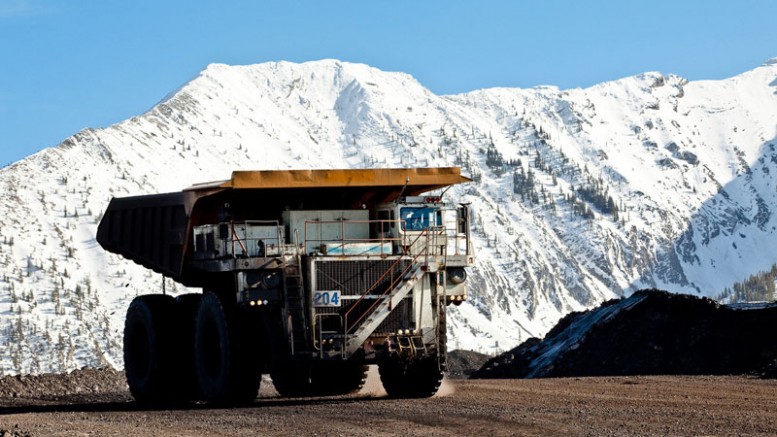Teck Resources (TSX: TCK.B; NYSE: TCK) tallied a higher-than-expected quarterly profit, as it mitigated lower commodity prices with deep cost cuts.
Adjusted first-quarter profit came in at $18 million, or 3¢ per share, beating analyst expectations of negative 3¢ per share. In the same period last year, Teck earned an adjusted $64 million, or 11¢ per share, largely due to higher commodity prices.
The average realized prices for steelmaking coal dropped 29% to US$75 per tonne in the first quarter of 2016, while copper and zinc prices fell 20% compared to the same quarter last year.
Despite the lower price environment, all of Teck’s operations remained cash positive in the first quarter after sustaining capital expenses, except for the Pend Oreille zinc-lead mine in Washington.
“Our operations continued to perform well. The key story is cost management,” Don Lindsay, Teck’s president and CEO, said on a conference call.
Teck cut its total cash unit costs for steelmaking coal by US$12 per tonne to US$68 per tonne.

Teck Resources’ Highland Valley copper-molybdenum mine, 50 km southwest of Kamloops, British Columbia. Credit: Teck Resources.
Coal sales were higher than Teck had expected at 6.5 million tonnes, while production fell 3% year-over-year to 6.6 million tonnes. Despite the slightly lower output, unit cost of sales in Canadian dollars fell 8% to $78 per tonne.
“Our cost-reduction efforts continued to produce significant results in coal, helped by lower diesel prices,” Lindsay said.
The outlook for steelmaking coal has slightly improved, with the second-quarter 2016 benchmark price settling at US$84 per tonne for the highest-quality product, up US$3 per tonne from the previous quarter. Teck expects to sell more than 6.5 million tonnes in the second quarter.
“The market continues to get closer to being balanced,” Lindsay said, adding there have been signs that demand in March improved.
Supply dropped after mine closures, with U.S. coal companies filing for bankruptcy protection; recent weather issues in Australia affecting output; and announcements from China that support steelmaking coal, Lindsay says. One such announcement includes the Chinese government asking miners to lower their annual operating days, as part of a “supply-side reform.”
Meanwhile, Teck’s copper cash unit costs after by-product credits declined 16% to US$1.29 per lb. in the first quarter. Compared to a year ago, copper production increased 1,000 tonnes to 82,000 tonnes, while sales rose 10,000 tonnes to 81,000 tonnes.
Lindsay says the consensus estimate is that the copper market will remain slightly oversupplied in 2016, before moving into a deficit in 2017.
Teck’s quarterly zinc output came in at 175,000 tonnes in concentrate and 79,000 refined tonnes, both above the levels produced a year ago.
“The zinc market is poised for change due to rapidly depleting inventories,” Lindsay said. Mine closures have tightened concentrate supply, while “demand growth remains positive and is expected to outpace supply curtailment.”
Commenting on the quarterly results, Raymond James analyst Alex Terentiew writes that “all divisions performed well, with production generally in line or better than our estimates … with cost reductions continuing to underpin better-than-expected cash flow.”
While gross profit before depreciation and amortization fell 32% year-over-year to $464 million, cash flow from operations came in at $373 million, in line with $374 million a year ago. Revenue was $1.7 billion, down from $2 billion a year ago, due to lower commodity prices.
Teck reports that construction at its 20%-held Fort Hills oilsands project in Alberta is 55% complete, with $1 billion remaining in its share of capital expenses. The project should come online in late 2017.
The miner has more than $5.1 billion of liquidity, including $1.3 billion in cash at April 25, and an unused US$3-billion credit facility.
Lindsay mentioned that the company’s near-term priorities include keeping operations cash-flow positive, funding its 2016 share of costs at Fort Hills from internal sources and maintaining a strong balance sheet.
Teck aims to exit the year with more than $500 million in cash, while keeping its credit facility undrawn.
Its shares gained nearly 5% on the quarterly results to close April 26 at $13.69.


Be the first to comment on "Teck’s Q1 profit beats expectations"